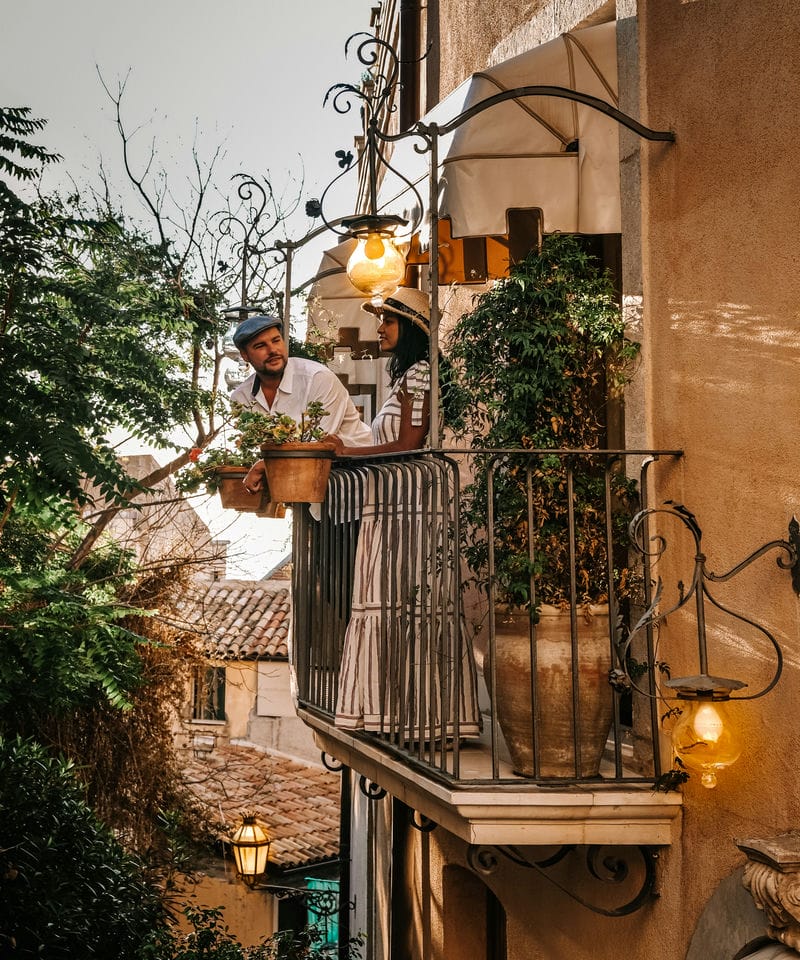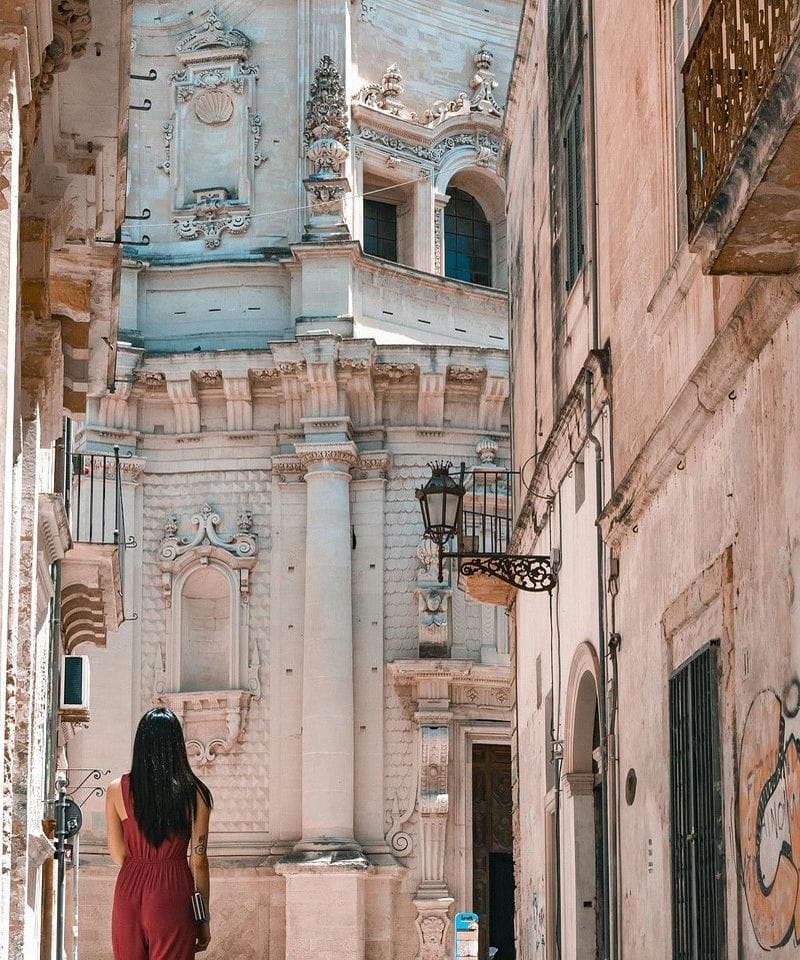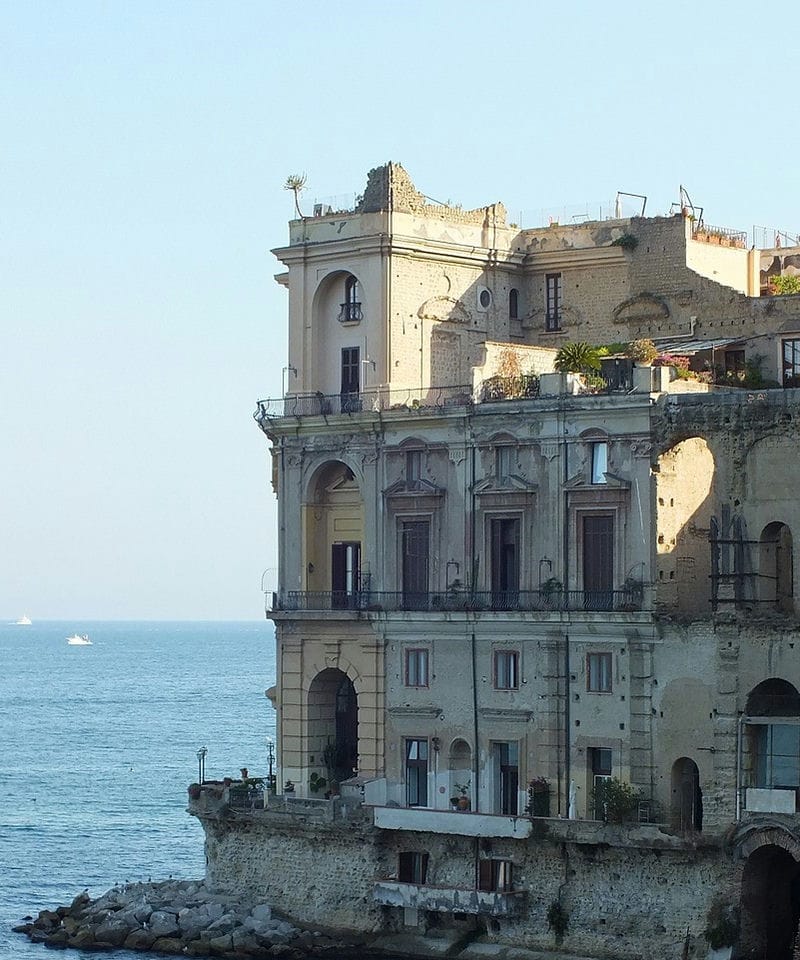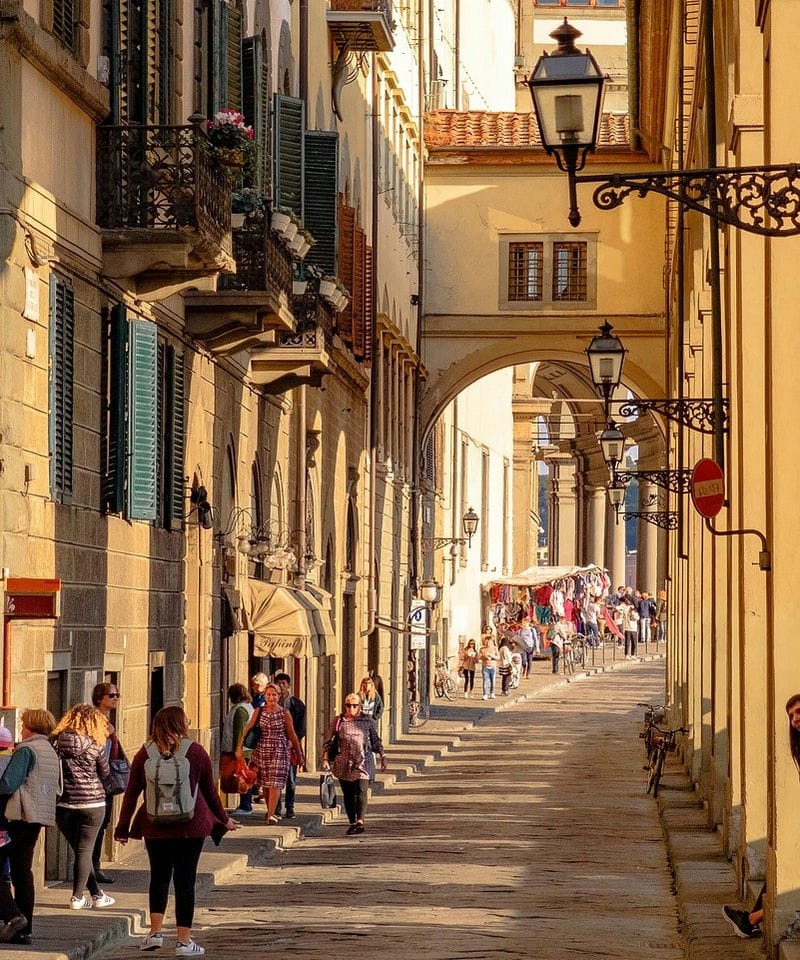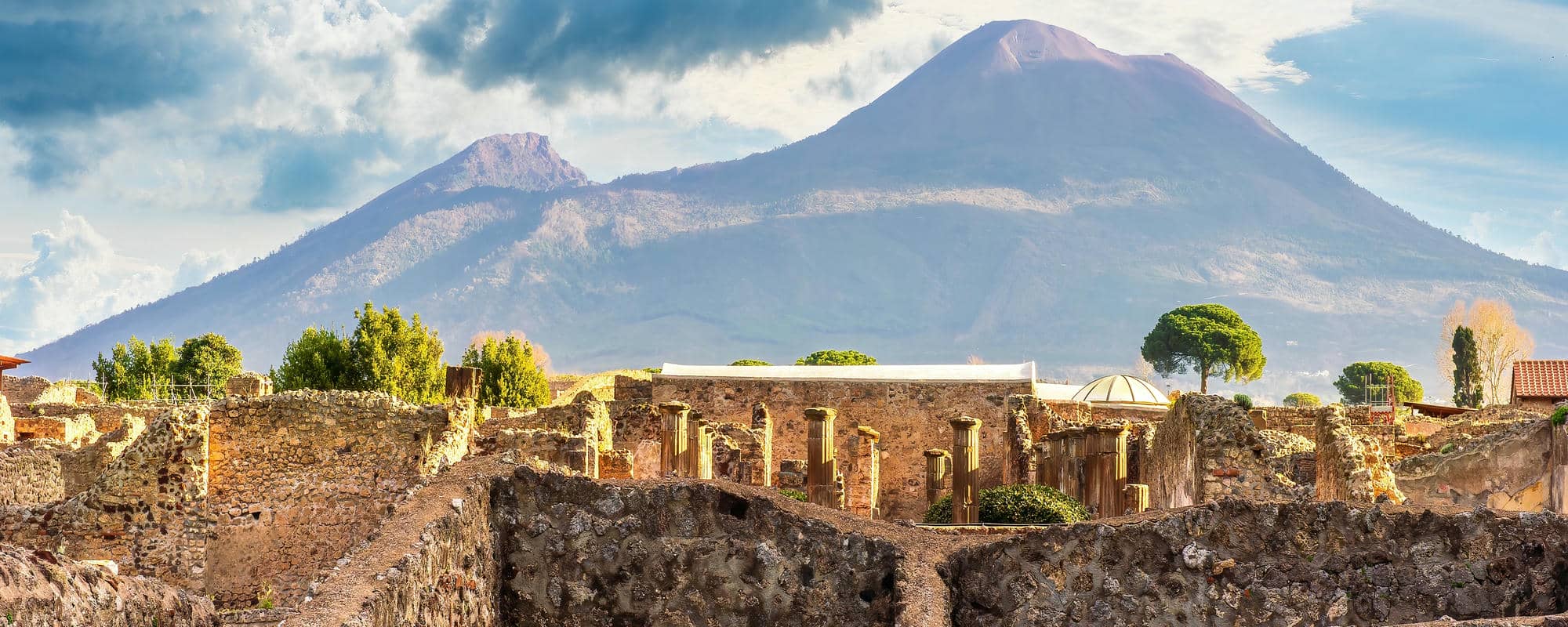
Pompeii: Insights into the Ancient Roman City and Its Ruins
Key Takeaways
- Pompeii is a well-preserved ancient Roman city near Mount Vesuvius in Italy.
- Visitors can explore ruins and learn about Roman life, culture, and history.
- The site includes famous locations like the Amphitheater and Villa of the Mysteries.
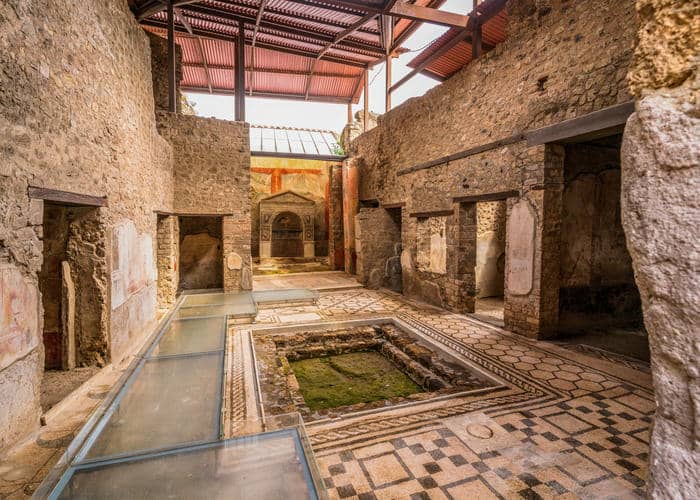
Locked in time by the catastrophic eruption of Mount Vesuvius in 79 AD, Pompeii unveils a rare snapshot of ancient Roman life.
This UNESCO World Heritage Site, often regarded as an open-air museum, offers a unique glimpse into the architecture, art, and everyday activities of its people.
Visitors to Pompeii are greeted by remarkably preserved ruins, showcasing homes, temples, and public spaces that reveal much about the everyday life of a society that once thrived there.
Though destroyed nearly two millennia ago, Pompeii continues to captivate those interested in history and archaeology.
The layers of ash and pumice that buried the city also fossilized its buildings and artifacts, allowing modern explorers to walk through its streets and squares much like ancient Romans once did.
The vibrant frescoes and mosaic floors highlight the artistry and culture of an era long gone, a result of numerous excavations over the years.
Planning a visit to the ancient city of Pompeii offers an engaging and educational journey. The site features key attractions like the Amphitheater, the Forum, and the Villa of the Mysteries.
Located near Naples, it provides plenty of opportunities to explore nearby attractions such as Herculaneum for those eager to dive deeper into the haunting aftermath of Vesuvius's eruption.
History Of Pompeii
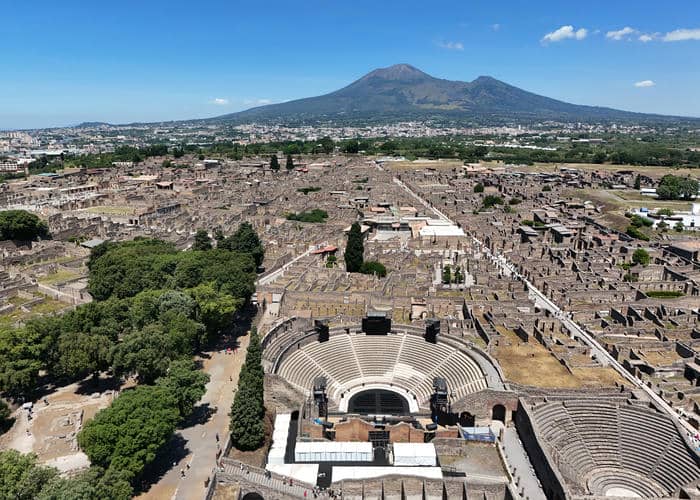
Pompeii, an ancient, once thriving Roman city near Naples, is known for its tragic end due to a volcanic eruption. Built as a bustling Roman town, it was eventually buried in ash, preserving its rich history.
Rediscovered and excavated, it remains one of the world's most significant archaeological sites.
Founding And Early History
Pompeii's history dates back to the 7th century BC when the Opics established it as an agricultural community.
The fertile soil of the Sarno Valley, enriched by volcanic debris and activity, supported farming and trade. As time went on, Pompeii became a strategic port.
By the 4th century BC, Pompeii fell under Roman influence, before being ultimately buried under an ash cloud from the eruption of Mount Vesuvius.
In 310 BC, during the Second Samnite War, Pompeii was involved as a port for the Roman fleet.
Over time, it developed into a bustling commercial hub, adopting Roman customs and structures.
Daily Life In Pompeii Before The Eruption
Before the catastrophic eruption in AD 79, life in Pompeii was vibrant.
The city had a complex social structure with a mix of wealthy Romans and common folk. Residents engaged in commerce, politics, and leisure activities.
In Roman times, Pompeii was much closer to the coastline than it is today — likely within 1 km (or less) of the sea.
Changes in sea level and sediment deposits from the Sarno River over 2,000 years have pushed the shoreline farther away from the ancient city.
Markets and shops bustled with goods such as wine, olive oil, and fish sauce. Public baths, amphitheaters, and villas reflected the culture and leisure activities of its inhabitants.
Meals, like the elegant cena or dinner, showcased Roman culinary traditions. Intricate frescoes and mosaics adorned homes, illustrating daily activities and religious beliefs.
Pompeii was known for its rich cultural exchanges.
The Eruption Of Mount Vesuvius In AD 79
Mount Vesuvius erupted suddenly in AD 79, covering Pompeii in volcanic ash and pumice.
This tragic event destroyed the city but simultaneously preserved it under a thick blanket of volcanic material.
People and their daily lives were encapsulated as they were, offering a unique look into Roman civilization.
The eruption lasted two days, spewing ash that sealed buildings, artifacts, and remains. The lack of air and moisture allowed for exceptional preservation.
This harrowing event turned Pompeii from a lively city to a silent repository of history, capturing an instant in time, with more than two-thirds of the city preserved.
Rediscovery And Excavation Of Pompeii
In 1748, the ancient Pompeii was rediscovered during the reign of Charles III of Spain, leading to new discoveries about ancient Roman life.
Initial excavations unveiled an intact city inside the city walls, offering unparalleled insights into Roman life.
French and Italian explorers and archaeologists have since uncovered streets, buildings, frescoes, and even the remains of the people.
Each excavation effort has added to the understanding of Roman architecture, art, and daily life.
Ongoing efforts continue to reveal more about the city's residents and culture, preserving its significance as a part of world heritage.
The Pompeii "exhibition" today is a fascinating snapshot of an ancient world, frozen at the moment of disaster.
Planning Your Visit To Pompeii
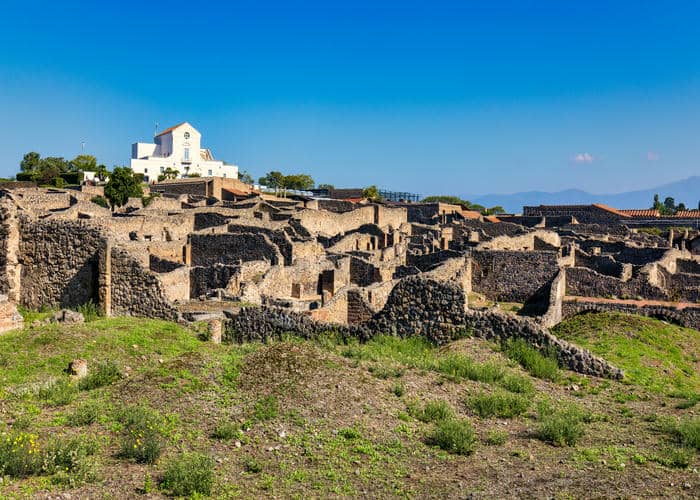
When visiting Pompeii, timing, transport, tickets, and accessibility are crucial.
Choose the right season, know how to reach Pompeii easily, buy the right tickets, and be aware of the facilities available on-site.
This will ensure a smooth and enjoyable visit.
Best Times To Visit Pompeii
The best time to visit Pompeii is during spring (April to early June) and fall (September to October), when the on-site snack bar offers refreshments.
During these months, the weather is mild, making it pleasant for walking through the ruins. Summers can be very hot, with temperatures sometimes reaching over 90°F, which can be uncomfortable.
Try to visit early in the morning or later in the afternoon to avoid crowds and the midday sun. Midweek days are generally less crowded than weekends.
How To Get To Pompeii
Pompeii is located about 14 miles southeast of Naples in the Campania region, near the Bay of Naples.
Travelers can take the Circumvesuviana train from Naples. The train ride takes around 30-40 minutes.
Get off at Pompeii Scavi - Villa dei Misteri station, which is the closest stop to the main entrance. Alternatively, Pompeii is accessible by car via the A3 highway; parking is available near the site.
Ticket Information And Pricing
Visitors can purchase tickets at the entrance or online, and for additional assistance, the information desk can provide helpful details.
Ticket prices vary, with discounts for EU citizens aged 18-24 and free entry for EU residents under 18. Standard tickets often grant access to other nearby archaeological sites, including Herculaneum.
Consider guided tours for a more insightful experience; they usually include priority entry.
Accessibility And Facilities
As part of its designation as an archaeological park, Pompeii has made several improvements to increase accessibility for visitors.
'Pompeii for All' is a pathway designed for wheelchair users and those with limited mobility, covering the most significant parts of the ruins. Some areas remain challenging due to rough terrain.
Facilities include restrooms, a café, and a bookshop near the entrances. There are also shaded areas for rest.
It is advisable to bring water and wear comfortable shoes, as exploring Pompeii involves a lot of walking.
Top Attractions In Pompeii
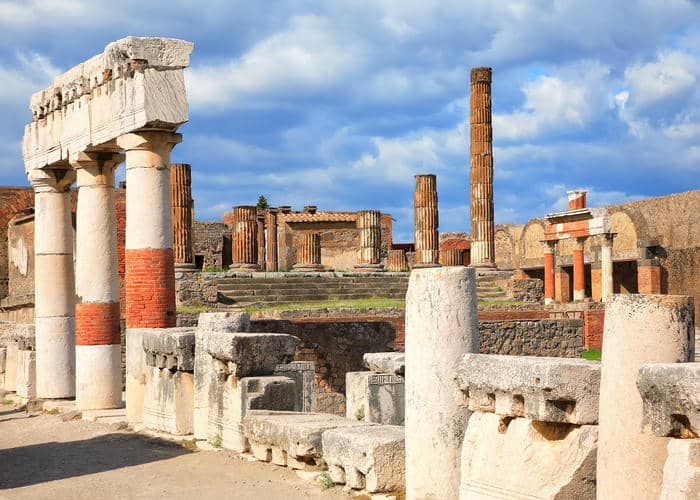
Pompeii is an ancient city frozen in time, offering a fascinating look into Roman life.
Visitors can marvel at well-preserved structures, like the amphitheatre where gladiators once fought, and private homes adorned with stunning mosaics.
The city's public central baths, temples, such as the Doric Temple of Hercules, and gardens reveal daily life and rich cultural heritage.
The Forum
The Forum in Pompeii was the heart of the city's social and political life. It was a bustling marketplace surrounded by important public buildings.
Visitors can still see the remains of the colonnades and the Temple of Jupiter. The area was once a lively hub of commerce and government, providing insight into the civic life of ancient Rome.
The Amphitheatre
Pompeii's Amphitheatre is one of the oldest stone amphitheatres in the Roman world. It could seat around 20,000 spectators.
Built in 80 BC, it hosted events like gladiator games and public spectacles. The structure showcases ancient engineering, with wide corridors and an arena area specifically designed for optimal viewing and acoustics.
The Villa Of The Mysteries
The Villa of the Mysteries is famous for its well-preserved frescoes. These wall paintings depict scenes possibly related to the Dionysian mysteries.
The frescoes offer a rare glimpse into Roman art and the private rituals of mystery cults. The villa's layout is typical of Roman country houses, with lavish decorations and functional spaces.
The House Of The Faun
The House of the Faun is one of Pompeii's largest and most luxurious residences. It’s named after the bronze statue of a dancing faun found in the atrium.
The house also features the famous Alexander Mosaic, believed to depict the Battle of Issus. Visitors can appreciate its intricate design and opulent Roman artistry.
The Stabian Baths
The Stabian Baths are among the oldest in Pompeii, offering a peek into Roman bathing culture.
This complex included a gymnasium, cold, warm, and hot rooms for bathing. Intricate frescoes and stucco work adorn the walls, illustrating the importance of bathing in social and daily life. The design reflects advanced Roman engineering.
The Brothel
The Brothel in Pompeii, or Lupanar, is known for its erotic frescoes. These decorated walls provide insight into the sexual norms and practices of ancient Rome.
The building had small rooms with stone beds and informative graffiti etched by visitors. The brothel was a part of everyday life, catering to various social classes.
The Forum Baths
The Forum Baths represent the luxurious public baths available to Pompeii residents. They offer separate areas for men and women and display remarkable architectural features.
The heating system, known as the hypocaust, worked beneath the floors and walls to keep the baths warm. The intricate frescoes add to the site's allure.
The Garden Of The Fugitives
The Garden of the Fugitives is a poignant site in Pompeii. It contains plaster casts of victims caught in the eruption of Mount Vesuvius.
The garden area serves as a graveyard, preserving the positions in which people were found. It is an emotional reminder of the devastation and offers a glimpse into their final moments.
The Temple Of Apollo
The Temple of Apollo is one of the oldest religious buildings in Pompeii. This temple once housed statues of Apollo and Diana, reflecting the city's devotion to these deities.
The architecture blends Roman and Greek styles. Columns and altars still stand, offering clues about religious practices and architectural influences.
The Pompeii Spectacular Mosaics
The mosaics in Pompeii are extraordinary examples of ancient Roman art. These detailed artworks adorned the floors and walls of public and private buildings.
One famous mosaic, the Alexander Mosaic, depicts a battle scene with remarkable detail. The vibrant colors and craftsmanship illustrate the artistic achievements and cultural aesthetics of the time.
Tips For Visiting Pompeii
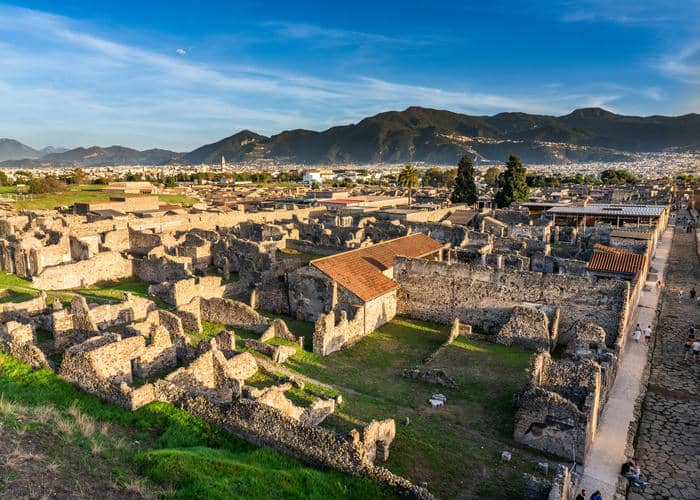
Visiting Pompeii can be a rewarding experience if planned well. Knowing the best times to visit, how to navigate the site, and what essentials to bring can greatly enhance the trip.
1. Visit During Off-Peak Times
Choosing the right time to visit can make a big difference. Weekdays tend to be less crowded compared to weekends.
This allows for more exploration without being rushed or squeezed through tight spots. The cooler months, like early spring and late fall, usually mean fewer visitors.
Temperatures are also more pleasant then, making it easier to spend longer at the site. Avoiding national holidays and school vacations can also help in finding quieter times.
2. Arrive Early To Avoid Crowds
Arriving early in the day gives visitors an advantage. When the gates open in the morning, fewer tourists are present, making it easier to explore.
This provides a better chance to enjoy uninterrupted views and photographs of the ruins.
Early birds can also complete their visits before the midday sun gets too intense. This way, you can comfortably enjoy the site's beauty without the pressure of large groups.
3. Wear Comfortable Shoes And Clothing
Pompeii's ancient streets are made of uneven stones, requiring comfortable and sturdy shoes. These kinds of shoes help prevent slipping and ensure that walking long distances is more manageable.
Light, breathable clothing helps tackle the heat, especially in summer, as there isn’t much shade around.
A hat and sunglasses can provide extra sun protection. Visitors should also prepare for all kinds of weather conditions.
4. Stay Hydrated And Bring Snacks
The lack of shade and high temperatures require visitors to stay well-hydrated. Carrying a reusable water bottle is practical.
Although some refreshments are available on-site, they might be limited or expensive. Bringing light snacks can help keep energy levels up.
Small items like nuts or granola bars fit easily in a backpack or bag, providing quick nourishment during the exploration.
5. Use A Map Or Hire A Guide
Navigational tools can greatly aid the visit. A detailed map helps show the numerous paths and points of interest, ensuring nothing is missed.
These can usually be obtained at the entrance. For those who prefer a deeper dive into the history, hiring a guide could be valuable.
Guides offer insights and stories that bring the ruins to life. Either way, having a plan or guidebook ensures a richer experience.
6. Explore Beyond The Main Areas
While the main sites like the Forum and amphitheater are popular, visitors shouldn’t overlook other areas.
Walking towards the lesser-known sections can show various aspects of ancient life, like private homes or lesser-visited streets.
Exploring beyond the obvious locations often leads to unexpected discoveries, such as smaller frescoes or hidden gardens. This variety enriches the adventure.
Visiting Mount Vesuvius
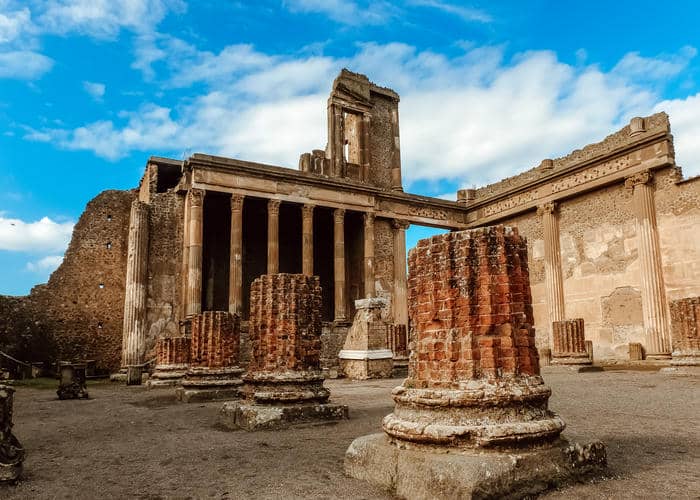
Mount Vesuvius offers breathtaking views and a unique opportunity to hike an active volcano. Visitors can explore its trails and reach the impressive crater.
Whether choosing a guided tour or exploring independently, there are several options for a memorable visit.
How To Get To Mount Vesuvius From Pompeii
Traveling from Pompeii to Mount Vesuvius is straightforward. Buses run regularly from the Pompeii train station to the base of Vesuvius.
The main company operating these routes is EAV, and tickets can often be purchased on board.
For those who prefer more flexibility, private cars or taxis are available, offering a quicker and more direct route. The drive from Pompeii to Vesuvius’ parking area takes about 30 minutes.
Guided Tours Vs. Self-Guided Tours
Visitors to Mount Vesuvius can choose between guided tours or exploring on their own.
Guided tours provide insights into the history and geology of the volcano. Tour guides often share fascinating stories about the infamous eruption in 79 AD.
For a self-guided experience, visitors can follow marked trails at their own pace. Self-exploration allows more freedom but requires adequate preparation.
Bringing a map and understanding the basic trail layout is crucial to ensure a smooth visit.
What To Expect At The Crater
Upon reaching the summit of Mount Vesuvius, visitors will find an impressive crater.
The crater measures about 230 meters across. The hike up might be steep in places, but is manageable for most fitness levels.
Visitors can look into the depths of this volcanic wonder and observe wisps of steam rising from the earth.
The panorama includes views of the Bay of Naples, Pompeii, and beyond. There are viewing platforms for safe observation.
Safety Tips For Visiting The Volcano
Safety is important when visiting Mount Vesuvius.
- Sturdy footwear is essential, as trails can be rocky and uneven.
- It’s advisable to carry water to stay hydrated, especially in warmer months.
- Weather conditions can change quickly. Visitors should bring layers of clothing for warmth and wind protection.
- Always stay on marked paths to prevent accidents.
- Respect any safety signs and instructions from park staff to ensure a secure visit.
Nearby Attractions: Herculaneum
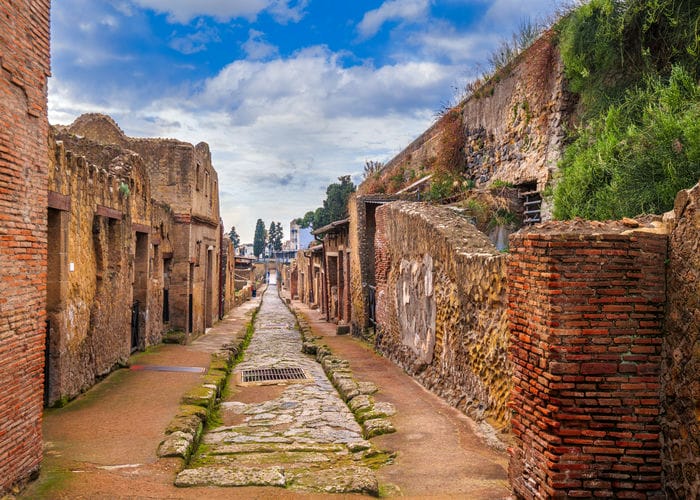
Herculaneum is another ancient city that, like Pompeii, was buried by the eruption of Mount Vesuvius in 79 AD.
Known for its rich history and well-preserved ruins, Herculaneum offers visitors insights into Roman life and unique architectural sites.
Brief History Of Herculaneum
Herculaneum was an affluent Roman town once bustling with life. It was smaller than Pompeii but wealthier, with lavish homes and intricate mosaics.
When Vesuvius erupted, this city was buried under 16 meters of ash and mud. This deep layer preserved the buildings, artifacts, and even organic materials like wood and food, unlike Pompeii, where most organic matter was destroyed.
The site was first discovered in the 18th century. Excavations revealed the town's luxurious villas, public baths, and a wealth of artifacts.
The Villa of the Papyri, an opulent seaside villa, housed an extensive library, offering insights into Roman art and philosophy.
Today, visitors can explore these ruins and see how Roman elites lived, dined, and celebrated.
Key Sites To Visit In Herculaneum
Herculaneum offers several key sites that delight history buffs and casual tourists alike.
The House of the Deer is notable for its beautiful frescoes and elegant garden that offers incredible views of the bay.
The Samnite House is a well-preserved example of pre-Roman architecture, showcasing the town's rich history over the centuries.
The Central Thermae are ancient bathhouses where one can appreciate Roman engineering.
Villa of the Papyri, although mostly unexplored, is a must-visit for its vast collection of charred scrolls, offering a glimpse into Greek and Roman literary works.
Unlike Pompeii, Herculaneum is less crowded, allowing for a more intimate experience of these breathtaking sites.
Comparison Between Pompeii And Herculaneum
Pompeii and Herculaneum were preserved differently. Herculaneum's deeper burial led to better preservation of organic materials.
Its smaller size means fewer crowds and a more concentrated visit, as houses and streets are intact.
Pompeii offers a broader view of Roman urban life with its extensive network of streets, theaters, and public spaces.
In contrast, Herculaneum preserves private life facets, such as wooden furniture and intact food items.
This distinction makes it a unique complement to any visit to Pompeii.
Both Pompeii and Herculaneum are UNESCO World Heritage Sites, but each offers a unique perspective on the past.
Final Thoughts
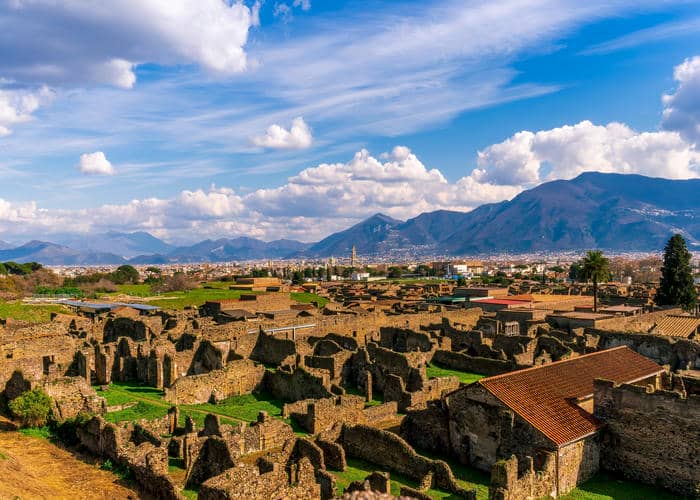
The ancient city of Pompeii offers a window into the past, preserved beneath layers of volcanic ash since the eruption of Mount Vesuvius in 79 CE. This sudden event covered the city, freezing this early empire in time.
Pompeii provides valuable insights into Roman life. Streets, homes, and public buildings reveal the social and cultural aspects of Roman society. Everyday items, like pottery and tools, remain well-preserved.
The site is a vital resource for modern archaeologists and historians. By studying the ruins, they uncover archaeological evidence about ancient urban planning and architecture. Restoration continues to maintain the site's integrity.
Key features of Pompeii include:
- Triangular Forum: The social and political center.
- Amphitheater: Venue for public events and games.
- Baths: Demonstrating the importance of hygiene and leisure.
Pompeii remains a popular tourist destination, drawing visitors from around the world.
Its preservation offers unique educational opportunities and continues to captivate those interested in history and archaeology, especially within its large areas of uncovered ruins.
The tragedy of Pompeii serves as a reminder of the power of nature. Volcanoes pose real risks to nearby communities, making preparedness critical to prevent future loss.





